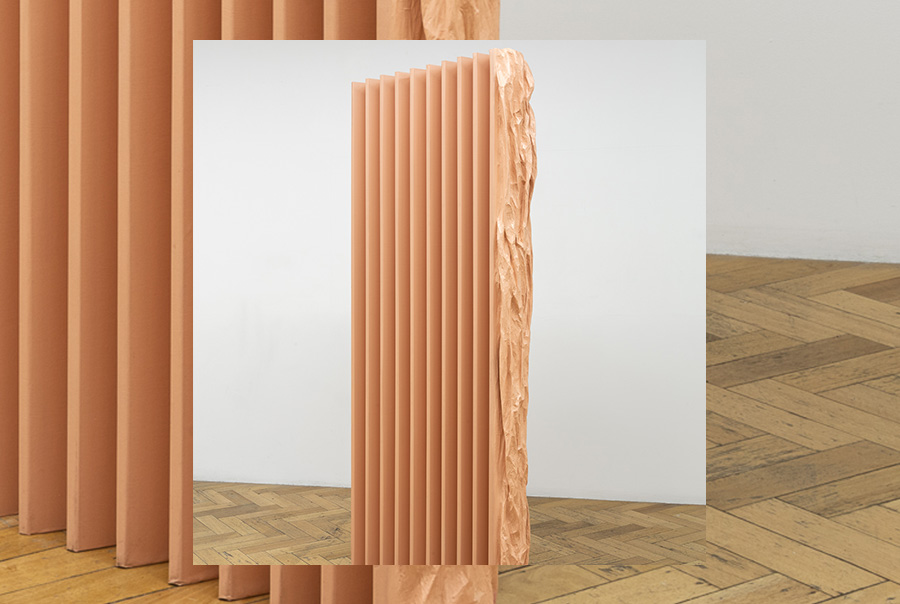I've never been more ecstatic than when I got the news that I'd received a Samstag Scholarship. Immediately it has given me so much confidence in what I'm doing with my work.
Image: Kate POWER, When you open your mouth to speak (detail),
2018, aluminium, vinyl, papier-mache. 180 x 120 x 20 cm. Photo: Christo.
KATE POWER (SA)
Kate Power works across media, drawing on craft, video, sculpture and performance. She graduated from the South Australian School of Art with a Bachelor of Visual Arts (Honours) in 2015 and has undertaken several overseas residencies, exhibiting widely in South Australia and interstate.
Psychoanalytic wonderland
Orifices—openings of all kinds—appear in Kate Power’s sculptures, installations, performance and video works, taking on the forms of vertiginous and slippery dark holes, moist mouths, spouting taps, fluffy sculptures, hard cylinders and zipped seams. They are variously massaged, prodded, rolled, caressed by fingers and gloved hands or simply observed. Power’s orifices share a point of view with the writings of feminist philosopher and psychoanalyst Luce Irigaray who proposes that orifices are a zone of exchange and connection.
In early work Ode to Orifice, Power suspended a large pink papier–mâché hoop from the branch of a tree in a local park. The ‘orifice’ referenced a nearby tree hole—the physiological effect of a lost limb—exposing the tree’s heartwood. Such holes sprout leaves and are used by birds as places of shelter. For Power, their appeal lay in their mysterious and performative qualities, as though they had the ability to communicate with the rest of the park.
Orifices often appear in Power’s work as part of staged and surrealistic tableaux, framing an eye in Found Wanting or expelling a sparkly blonde ponytail in Table Top Dancer and Simone. Power situates this formal trope alongside cascading spillages and biomorphic excretions—stuffed nylon stockings, falling and draped velvet fabrics, hanging and spooled thread. With playful humour her artworks recall the spectre of the abject. Though we often use ‘abject’ to stand in for ‘gross’, the psychoanalytic definition locates it in the relational. In psychoanalytic theory, the abject expresses horror at a loss of distinction between object and subject. Mother and child, or you and me.
In this regard Power’s assemblages and sculptural arrangements feel very much like an exteriorisation of unconscious processes in which the conflicting and contradictory impulses that govern intimate relationships are laid bare. What Power proposes about the experience of gender, sexuality and corporeality is complex.
In its lines of enquiry, particularly the centring of queerness and the body, Power’s work richly draws on a feminist framework. This extends to her approach to materials, reclaiming domestic ‘low art’ vernaculars of textiles—from chintzy satin to flirty lace—as though she’s raided a suburban Spotlight store. Maybe because our most intimate relationships with children, friends and lovers take place at home, I think of Power’s work—circling playfulness, fear of misunderstanding, erotic charge—as homely. Strangely homely.
Essay by Anna Zagala.
Anna Zagala is an arts writer in Tarntanya/Adelaide, South Australia.

